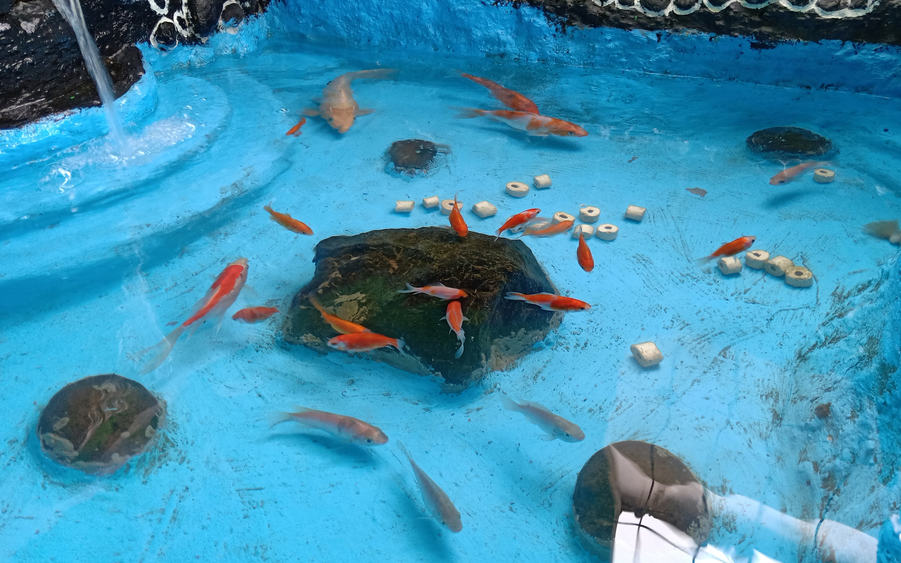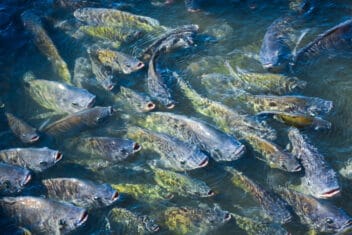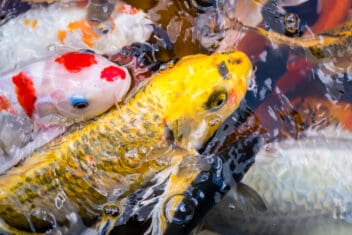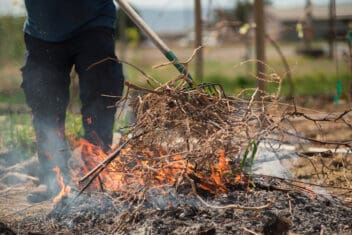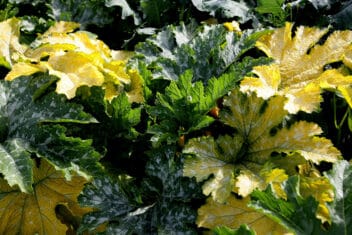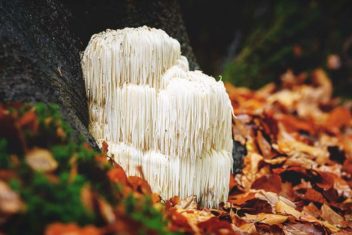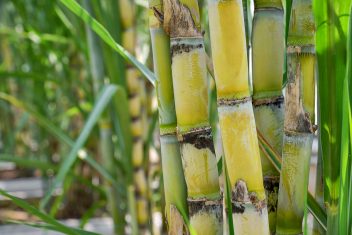There are many ways to raise fish in your backyard. You can use an existing lake on your property or install a complex tank system. Or, you can convert an existing swimming pool or koi pond into a pond for fish farming.
If you’re new to farming fish, head to our comprehensive primer first. It will help you figure out how to get started with the process.
Then, come back here and we’ll help you turn that unused pond or pool into a functional fish farm.
How to Convert a Swimming Pool
Whether you have an existing in-ground or above-ground swimming pool that you aren’t using, you can convert either into a fish farm pond. Here is how you can convert a swimming pool to your backyard fish farm:
1. Prepare a Pool
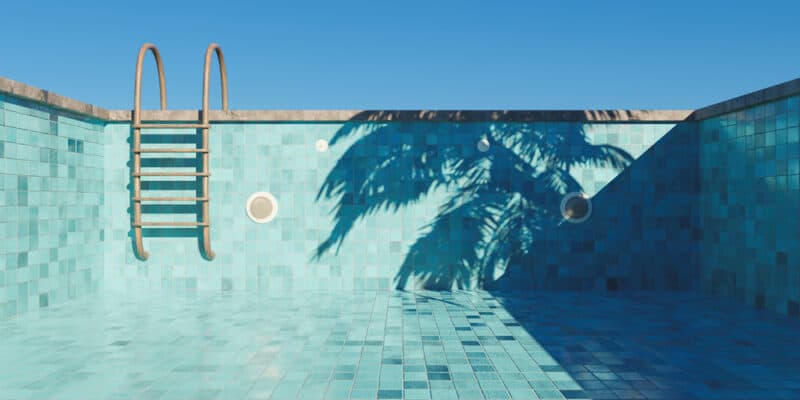
If you have an in-ground swimming pool (first, lucky you!) that you are tired of keeping up, then converting it into a backyard fish farm pond might be a good option for you.
If you don’t have an in-ground pool, you can always purchase an above-ground pool. Depending upon the time of year, you might be able to get a great deal on it. You can purchase a good above-ground pool in a variety of sizes here.
Or check out local marketplaces like Craigslist or Facebook to see if anyone else is looking to get rid of theirs. Lots of people find that their pools cost a lot more to run than they expected and would like to get rid of them.
Then, get it all set up so you can move on to the next step. If you have a pool that you’ve neglected for a few years, be sure to clean it up and scrub it well. If your pool is currently functioning, turn off all the equipment and stop adding chemicals.
You want the pool to be a clean slate before you start tossing your fish in.
2. Add Water and Begin Building Your Ecosystem
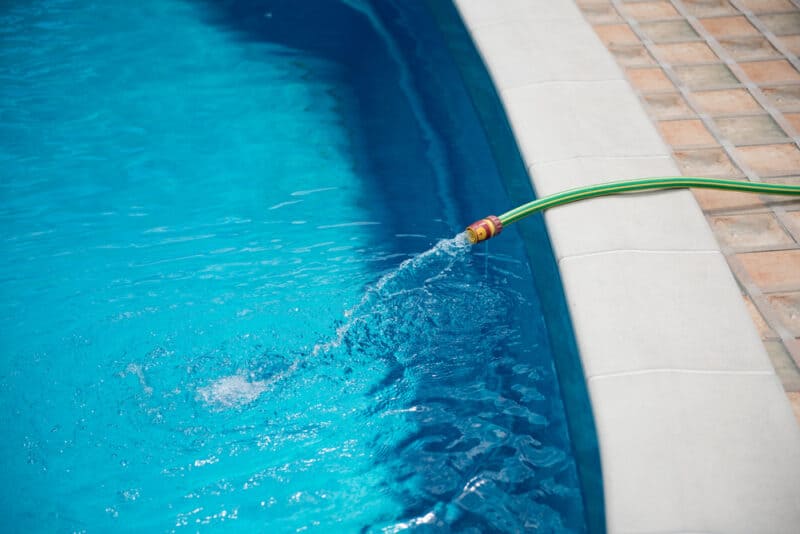
Fill the pool up with water. This can take a long time, depending on how large your pool is, so start early and plan on being around for a long time. Fill the pool up completely and then let it sit for 7-10 days.
You want the chlorine or any other additives to evaporate out before you start adding your fish. You also want any mud, silt, or dirt to settle to the bottom of the pool because dirty water can make some fish sick. In fact, fish like trout or salmon might die.
3. Provide Filtration

There are three types of filters: biological, mechanical, and water clarifiers. Because your swimming pool is a closed system, you’ll need some sort of filtration to have a healthy fish pond.
This can be as simple as a pump that pulls the water through some fine rocks or as complex as a pond skimmer combined with a mechanical filter and a biological filter.
A skimmer sucks up debris on the bottom of your pond, while a mechanical filter traps debris. A biological filter uses bacteria to break down waste. The better your filtration the happier most fish will be.
There are exceptions, like catfish, but most fish need good filtration. Trout and salmon, in particular, require clean water.
You can’t just re-use your existing pool filter, it’s not equipped to deal with the unique environment of a pond.
4. Add Aquatic Plants
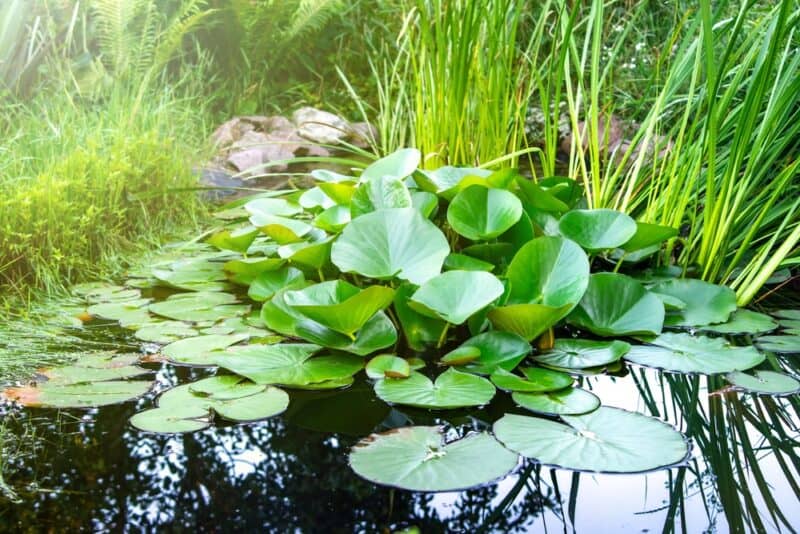
After the water has been sitting for at least a week, you can add in some floating or submerged plants. Water hyacinth, iris, taro, water chestnuts, floating fern, frogbit, water lettuce, parrot feather, anacharis, and hornwort are all great options.
Our guide has many other species worth considering. Ultimately, you want a ton of plants. At least half of the water surface should be covered in plants. Don’t forget to turn those stairs into a marginal plant environment.
Some of the waste your fish put out can be cleaned naturally by plants.
Some people raise plants in galvanized tubs with gravel at the bottom and then pump the clean water back into the living area to give the fish better living conditions. Healthier fish means a more nutritious food source for you.
If you go the tub route, insert a pond pump that will allow the filtered water from the plants to flow back into the swimming pool.
5. Feed the Fish
Plants provide natural food for your fish. Additionally, once the water is healthy, mosquitoes will start to lay eggs in the water, which is another source of food for the fish.
Honestly, if you are looking for an easy way to raise fish, you might prefer to feed them store-bought food.
However, if you are looking to be completely self-sustained, then, in the long run, taking the time and effort to build your own healthy ecosystem will be your best route.
It’s really about what your goals are. Just be sure that you don’t add any chemicals to the water.
We could go on and on about building a healthy ecosystem for your fish, but this will get you started.
How to Convert a Koi Pond into a Fish Farm

I love Koi ponds. I think they are pretty to look at and add a nice touch to an outdoor space. Even so, if you are like me, if I have something on my property (pretty or not) it has to serve a purpose.
Why not put your koi pond to good use as a fish farm? Here is how:
1. Prep a Koi Pond
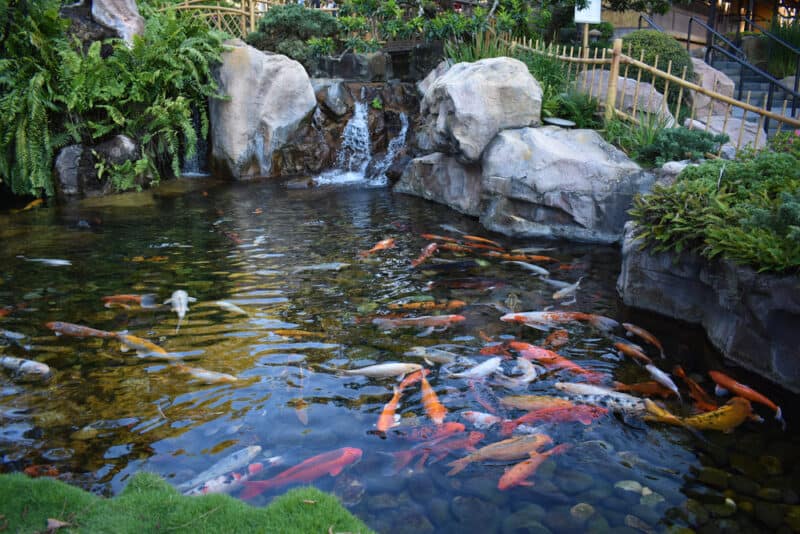
If you have an existing koi pond, you’re all set. Just clean it up to prepare it for its new job.
You can purchase koi ponds of different sizes in most home and garden stores or you can also purchase them online. For instance, you can purchase a 400-gallon koi pond here. It even includes lights so you can enjoy the show at night.
You need to consider how many fish you want to raise before purchasing. You would hate to have a koi pond that is too small.
It would be equally as frustrating if you purchased a great big koi pond and didn’t utilize it to its fullest potential.
Try to come up with a ballpark figure of how many fish you’d actually like to raise and then pick a pond. The rule of thumb is one pound of fish per five gallons of water.
2. Add Water
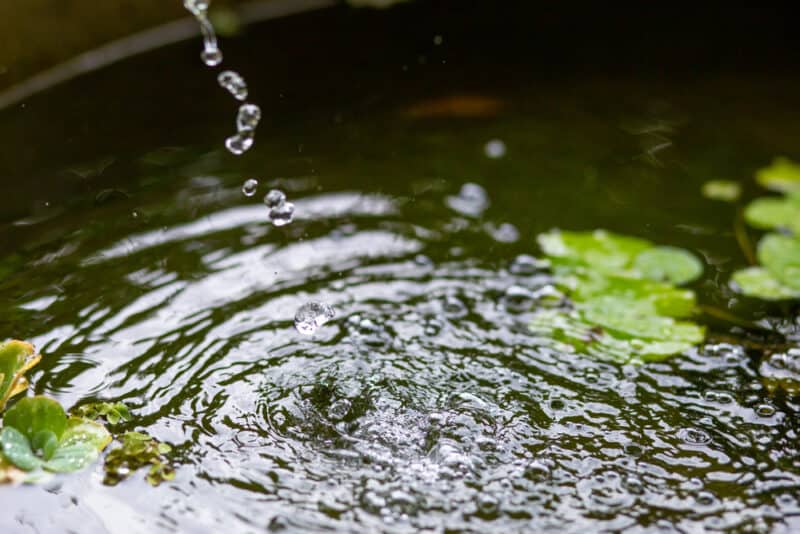
Just as with the swimming pool, you need to add water. Again, be sure that you don’t add chlorine or anything chemical to it. Let the water sit for at least a week before adding the fish.
There are chemicals that you can purchase that are supposed to keep algae away. Even so, if you are forming a natural ecosystem then a little alga is a good thing.
What you do or don’t use in your koi pond will all depend upon if you are trying to go all natural with a DIY ecosystem or not.
3. Develop the Ecosystem

As with the pool, add plants and let the ecosystem develop. You will need a filter system, as well.
If you want to stay natural, you can have plants and rocks in galvanized tubs and then pump the water through them. Pump the clean water back into the pool.
Or you can go with a more complex filter system as described above.
Don’t worry about adding decorative rocks or waterfalls.
Remember that the point here is to develop a self-contained ecosystem so you can raise fish, not to provide an ornamental feature to your yard. It can certainly serve both purposes, but the goal is function.
